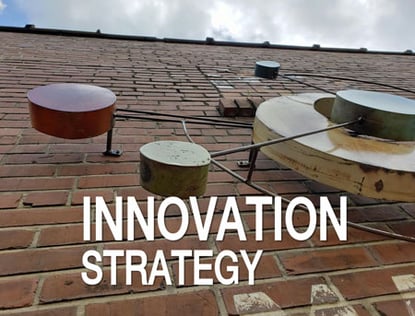Too often organizations think innovation is simply about generating a lot of creative or “out-of-the-box” ideas. But in organizations where innovation has truly become central to their culture, ideation is simply one step – and not necessarily the first – in an innovation process. Don’t confuse innovation with ideation. Ideation is a tool, but innovation is a process. Don’t let the word “process” intimidate you. Instead, focus on these five guidelines to jump start your innovation process.
1. Inclusion
Innovation isn’t an independent exercise. It takes the collective knowledge and, just as importantly buy-in, of the organization to be successful. Create an innovation team and get key stakeholders involved early and often. First, inform them of the process you want to use to jump start innovation, and then consistently include them in the steps and key outputs of that process. In other words, keep key stakeholders informed and involved. If you’re thinking that there are a million stakeholders in the organization, focus initially on those that have the power to impact whether the concepts defined as a result of the process will live or die on the vine. You can and should expand/modify the team as appropriate for different phases of the process.
2. Insights
Mine the knowledge that already exists within the organization and the market to inform the innovation process. Don’t let yourself get hung up on having every possible question answered before moving into Ideation. While you may find a need to fill some knowledge gaps to successfully implement the products, services or processes you are innovating, more than likely you already have access to what you need to create a solid frame of reference for the Ideation step.
3. Ideation
Consider bringing in a bipartisan facilitator experienced in navigating the nuances of building innovation teams and outcomes. Not only will they neutralize the emotions or power plays that can sometimes derail the process when led internally, but good facilitators go beyond the tools they use to help generate lots and lots of ideas to the synthesis and prioritization of those ideas with an objective eye on the outcome needed to succeed.
4. Initiation
Don’t stop at ideation. It’s at this point when your core innovation team is likely to require some additive players. Initiation is about creating an action plan that will ultimately allow you to test or roll out the new concept – whether it’s a product, service, channel, brand, or customer experience. The action plan should clearly define goals, strategies, tactics, roles, resources and responsibilities to ensure that innovation moves beyond an idea into measurable benefits for the organization.
5. Integration
An innovative culture isn’t built by witnessing a lot of new ideas come to life. In fact, a constant state of change without context can easily turn into frustration. Instead, when impactful innovation occurs, tell your organization the story – don’t just show them the result. Answer the questions on their minds. Why do we need this? How will it impact the company? How will it impact me and my day-to-day world? How can I make it more successful? Integration is about engaging the organization and turning each employee into a stakeholder.
Let’s face it, “innovation” can be a daunting word, but building your own custom approach around these five steps will make it much less intimidating for you and your organization. - Barb Murphy
The Brainzooming Group helps make smart organizations more successful by rapidly expanding their strategic options and creating innovative plans they can efficiently implement. Email us at info@brainzooming.com or call us at 816-509-5320 to learn how we can deliver these benefits for you.




